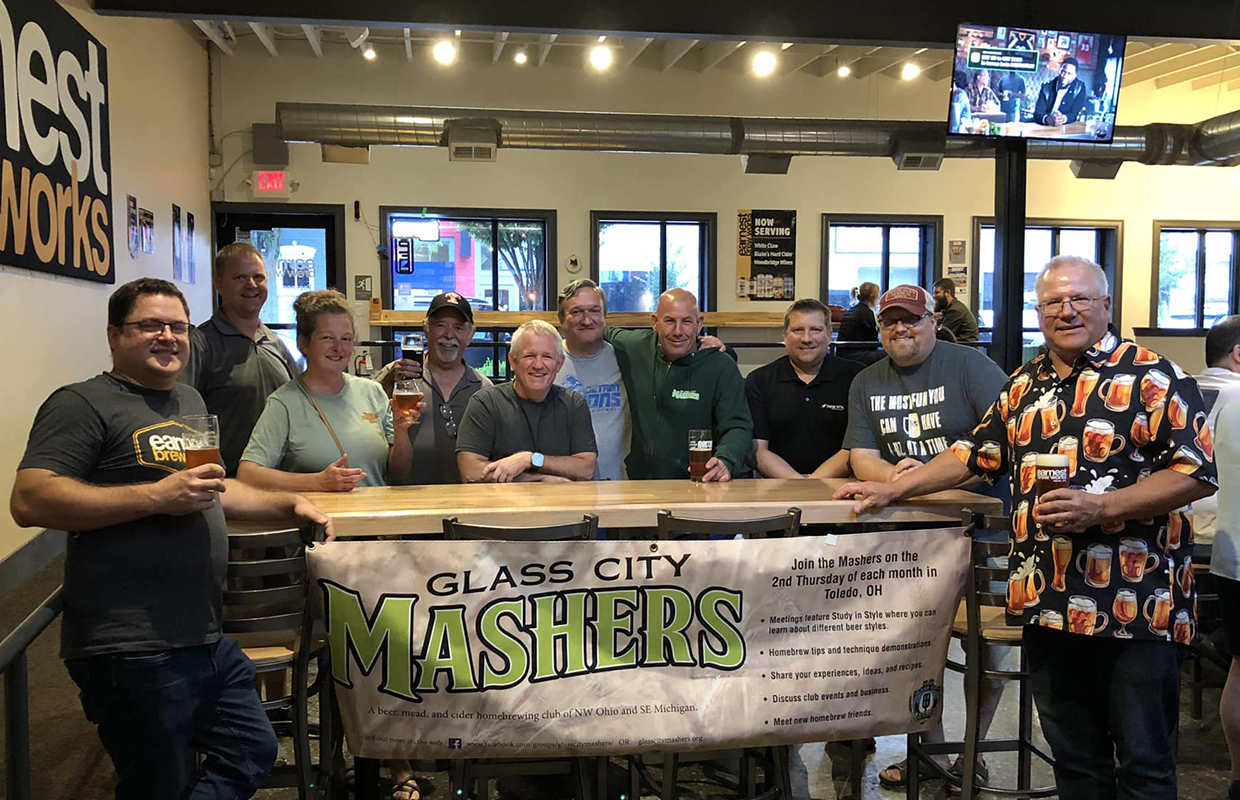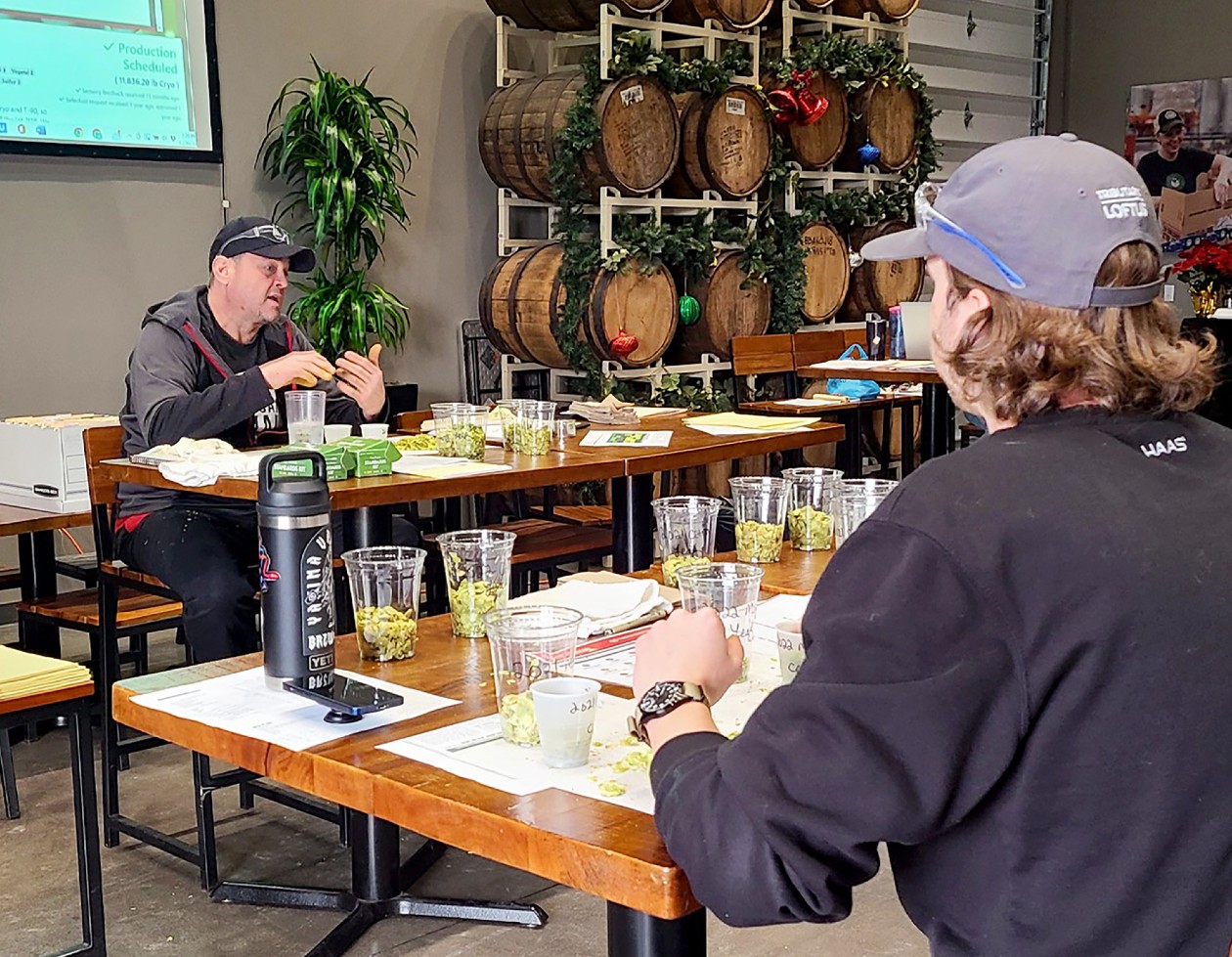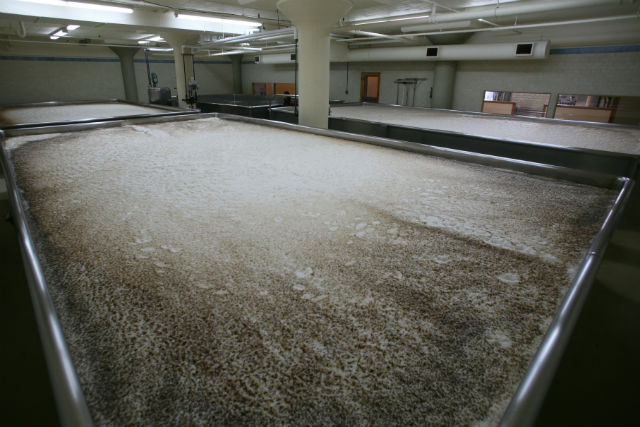
As a brewery grows in size, sometimes getting back to where it started can help ignite innovation. Leaning on a connection with a local homebrew club, Earnest Brew Works teamed with a veteran homebrewer to create a small-batch release at its downtown Toledo, Ohio location this past week.
Working with Ken Celski of the Glass City Mashers, Earnest Assistant Operations Manager Trevor Daniels moved the five-gallon batch of Peppercorn Rye Pale Ale up to the two-barrel system for release.
“Ken, I think, has been brewing since before I was even alive,” Daniel said. “So it’s really nice to pick his brain and talk about how he does his processes and we do ours and we get to share ideas and cement more into what we’re doing on a professional level, and get some little nuggets of where we can use some homebrew techniques in ours.”
Daniels said the use of flaked rye and peppercorns are two things he’s never done on the small-batch system. Earnest brews on a seven-barrel system at its main location in South Toledo while Daniels helps create two downtown-specific beers, including a rotating Lager program along with what this Peppercorn Rye was released under, which is called the ExBEERimental tap.
READ MORE: Retooling Brands a Small Part of Belching Beaver’s New Pilot System
Taking the recipe from a friend, Celski said he’s adjusted the idea a few times in the process. At the recent Big Brew Day in May — an event promoted by the American Homebrewers Association — he was approached by Earnest owner Scot Yarnell and asked to create a beer together. Yarnell has been a part of the club since before opening Earnest in late 2016. Celski pitched two beer ideas, a Weizenbock or the Peppercorn Rye.
“In today’s brewing world, Peppercorn Rye is going to be the favorite because it’s flavored,” he said, pointing out that classic styles sometimes are ignored by a general consumer and he understands the beer needs to be sold. “They scaled it up and I had a great brew day with Trevor.”
Making adjustments to where the peppercorn was added – first in a hop spider and later directly into the boil — gave Celski an idea of how to move that over to the professional side in discussions with Daniels.
“We got to try a sample of the beer that he brought in one day when we were working,” Daniels said. “So we got an idea of what we were going to get from a product standpoint. We’d never used flaked rye before, definitely never used peppercorn before, and kind of see how using those can impact flavor.”
Using Special B in a small amount is something new to Daniels as well when making this beer.
“It provides very interesting and complex flavors to the beer that I found super enjoyable,” he said. “It was not even one of the main ingredients, but it was nice to do that and kind of get some ideas for some other future projects, as well. It’s cool to brew this beer that somebody else has experience with that ingredient, and then also be able to do it and feel very confident about what we’re going to produce — knowing that it has worked many times before — but also kind of him sharing experiences on how he’s used more of it, less of it, and how it affects the beer.”
Daniels added that in homebrewing you can experiment a lot more while when Earnest is experimenting, it’s 50 gallons at a time.
“That’s a lot of time and money put into something to mess around with,” he said. “It instills a lot of confidence in the product that you’re making but also gives you a lot of experience that you probably wouldn’t get unless you experiment like that. So it was great.”
Daniels said having Celski there on the brew day helped him create a better mental acuity as well.
“It was nice to explain your process and feel very comfortable in how you’re doing everything because you’re explaining how and why you do things,” he said. “It feels really good and it helps you pay a lot of attention on those days to really make sure you’re doing it exactly by the book and explaining from a paperwork perspective, like this is what we do and show how we take notes on these type of things because it can affect certain points of the beer.”
Celski said watching and helping on the brew day gave him an appreciation for the jump from homebrewing to professional brewing as well.
“Wow, there’s just so much more detail and just accounting for every bit of their process,” he said. “In homebrewing, you can be really loose with the process. You can try to be as precise as you can but Trevor? It was like watching a machine go.
“He had this equipment, he knows where every hose goes, all the valves, when to change things over. It was fun to watch and there was no reason to get in his way.”
Editor’s Note: Jon Sicotte is a member of the Glass City Mashers homebrewing club, based in Toledo, Ohio.




Be the first to comment